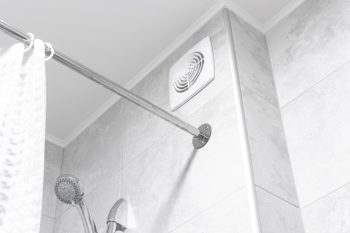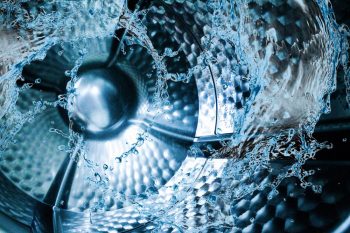
The evolution of technology has given rise to smart home devices that make our lives easier and more efficient. One such device is the robot vacuum, a smart home appliance that uses advanced mapping technology to clean your home. But how exactly does robot vacuum mapping work? Let’s dive into the details.
Robot vacuum mapping works by using advanced technology, such as cameras, gyroscopes, LiDAR, or vSLAM, to create a detailed map of your home. This map allows the robot vacuum to plan an efficient cleaning route, avoid obstacles, and ensure thorough cleaning of all areas. The mapping process contributes to the vacuum’s efficiency and battery life by enabling more precise navigation and optimized cleaning paths.
What is Robot Vacuum Mapping?
Robot vacuum mapping is a process by which robot vacuums create a map of your house during the initial cleaning. This map helps the robot understand the layout of your home, making it easier to clean all areas efficiently. The majority of high-end models are capable of cleaning hard surfaces and carpets alike, and mapping helps the vacuum avoid sections that it has already cleaned.
Mapping is important because it allows the robot vacuum to plan the most efficient cleaning route, ensuring that all areas of your home are cleaned thoroughly. Additionally, mapping enables the robot vacuum to avoid obstacles and other potential hazards that could interfere with the cleaning process. This results in a more effective and systematic cleaning pattern, as opposed to random movements that may miss certain areas or repeatedly clean the same spots.
The Technology Behind Robot Vacuum Mapping
There are several types of mapping technologies used in robot vacuums to help them navigate and clean efficiently. The main types include:
- Camera-based Mapping: This technology uses cameras to capture images of the environment and create a map of the area. It allows the robot vacuum to recognize and avoid obstacles while cleaning.
- Gyroscopic Mapping: Gyroscopic navigation uses gyroscope and accelerometer sensors to determine the robot vacuum’s position and orientation. This technology helps the vacuum maintain a straight cleaning path and cover all areas of the house.
- LiDAR-based Mapping: LiDAR (Light Detection and Ranging) technology uses infrared lasers to scan the environment and create a detailed map of the area. This technology is highly accurate and allows the robot vacuum to navigate efficiently around obstacles and clean in a systematic pattern.
- vSLAM (Visual Simultaneous Localization and Mapping): vSLAM technology uses optical scans of the room to create a map and plan the cleaning path. It combines camera-based mapping with algorithms to determine the robot vacuum’s position and orientation in real-time, allowing it to clean in straight lines and avoid obstacles.
Different robot vacuum models may use one or a combination of these technologies to achieve efficient and thorough cleaning. High-end models often offer smart mapping with smartphone integration, allowing users to monitor and control the cleaning process remotely.
Efficiency and Battery Life
The mapping feature in robot vacuums contributes to their efficiency and battery life by enabling accurate navigation, effective obstacle avoidance, and optimized cleaning paths, which ultimately leads to a faster and more energy-saving cleaning process.
However, it’s important to note that the mapping feature itself doesn’t directly contribute to battery life. Battery life depends on factors such as the size of the battery, the power consumption of the vacuum, and the cleaning mode used. Nevertheless, by enabling more efficient cleaning, the mapping feature indirectly helps the robot vacuum to conserve battery life, as it can complete its cleaning tasks in a shorter amount of time.
Navigating Around Furniture and Obstacles
Robot vacuums navigate around furniture and obstacles using a combination of sensors, algorithms, and mapping technology. These advanced navigation systems enable the vacuum to move in straight lines and cover all areas effectively. Some models use a combination of mechanisms to understand different types of information, like the distance between the robot and the object or creating a 3D picture of the object.
Conclusion
In conclusion, robot vacuum mapping is an advanced technology that enables robot vacuums to clean your home efficiently and effectively. By creating a map of your home, the robot vacuum can plan the most efficient cleaning route, avoid obstacles, and ensure that all areas of your home are cleaned thoroughly. Despite some limitations, such as struggling in low-light conditions or with dark surfaces, the benefits of robot vacuum mapping far outweigh the drawbacks, making it an essential feature for any high-quality robot vacuum.
Whether you’re a tech enthusiast, a busy professional, or someone who simply values a clean home, a robot vacuum with advanced mapping technology can be a valuable addition to your smart home setup. As technology continues to evolve, we can only expect these devices to become even more intelligent and efficient in the future.
Frequently Asked Questions
Can I use a robot vacuum on multiple floors of my house?
Yes, you can use a robot vacuum on multiple floors of your house. However, you’ll need to manually move the vacuum to the different floors. Some high-end models can even save multiple maps, allowing them to remember the layout of different floors.
What happens if an object is moved after the robot vacuum has created a map?
If an object is moved after the robot vacuum has created a map, the vacuum will detect the change in the layout during its cleaning run and navigate around the new obstacle. Some advanced models can even update their map in real-time as they detect changes.
How often does the robot vacuum need to map the house?
Most robot vacuums only need to map the house once. They can then store and reuse this map for future cleaning sessions. However, if significant changes are made to the layout of the house, it may be beneficial to have the vacuum remap the area.
Can I control where my robot vacuum cleans with the mapping feature?
Yes, many robot vacuums with mapping capabilities allow you to set virtual boundaries or specify certain rooms for cleaning using the map on the accompanying app. This gives you more control over where the vacuum cleans.
Can a robot vacuum function without mapping?
Yes, a robot vacuum can function without mapping. However, without a map, the vacuum will move randomly, which may result in less efficient cleaning. It might miss some spots or clean some areas multiple times.












